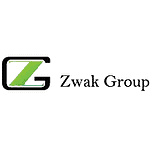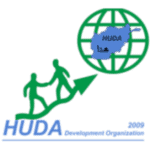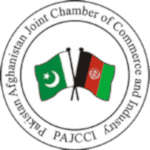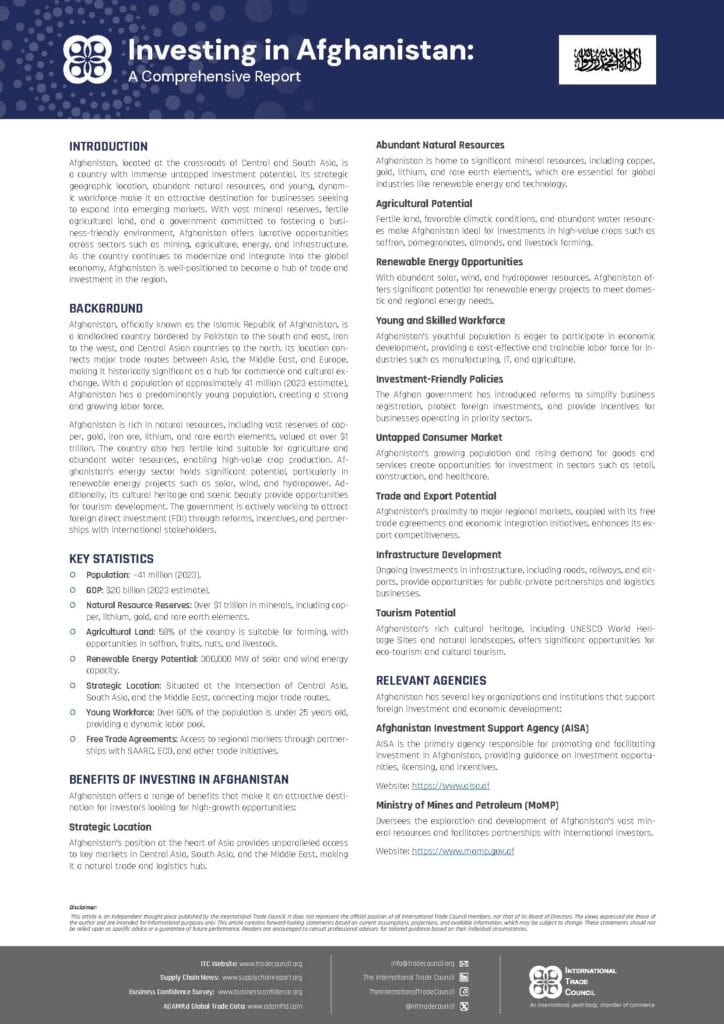- Type of Government: Islamic Republic, with a centralized government structure.
- Population: Approximately 40 million (as of 2024 estimates).
- GDP: Around $20 billion USD (as of recent data), with agriculture being the largest contributor.
- Corporate Tax Rate: 20%.
- Personal Income Tax Rate: Progressive rates from 0% to 20%, depending on income levels.
- Major Exports: Carpets, fruits, nuts, gemstones, medicinal plants, and wool.
- Major Imports: Machinery, petroleum products, foodstuffs, textiles, and pharmaceuticals.
Doing Business with Afghanistan
A comprehensive guide to doing business, exporting, investing, and manufacturing in Afghanistan.
Exporting goods to Afghanistan requires compliance with a variety of legal, regulatory, and logistical requirements. Understanding these steps is essential for businesses looking to successfully enter the Afghan market and avoid delays, fines, or other issues. Below is a comprehensive overview of the key requirements for exporting to Afghanistan, from regulatory compliance to documentation and logistical considerations.
1. Compliance with Afghan Import Regulations
Before exporting to Afghanistan, it’s crucial to understand and comply with the country’s import regulations. These regulations are enforced by Afghanistan’s Customs Department, which operates under the Ministry of Finance. Key regulatory areas include:
- Restricted and Prohibited Items: Certain goods are restricted or prohibited from entering Afghanistan, such as narcotics, counterfeit goods, and military-grade equipment. Exporters must ensure that their products are not included on the prohibited list or that they have obtained the necessary permissions to export restricted items.
- Product Standards and Certifications: Depending on the product category, Afghanistan may require certain certifications, such as safety standards, health certificates for food products, or quality certifications for machinery. It’s essential to verify if the goods being exported meet Afghan product standards.
- Tariff Classifications and Duties: Afghan Customs follows the Harmonized System (HS) for tariff classifications. Exporters should ensure their goods are correctly classified under the HS system to determine the applicable tariffs, customs duties, and taxes.
2. Necessary Export Documentation
Proper documentation is critical for the successful export of goods to Afghanistan. The following documents are typically required:
- Commercial Invoice: This document provides a detailed description of the goods being exported, including the price, quantity, and terms of sale. It is essential for customs clearance.
- Packing List: The packing list provides information about the contents of each shipment, including weight, volume, and packaging details. This helps Afghan Customs authorities verify the goods being imported.
- Bill of Lading/Airway Bill: Depending on the mode of transport (sea or air), the bill of lading or airway bill serves as proof of shipment and contains information about the shipment’s destination and consignee.
- Certificate of Origin: Exporters may be required to provide a certificate of origin, which certifies that the goods were manufactured or produced in the exporting country. This may affect the tariffs applied to the goods.
- Export License (if applicable): Certain goods may require an export license from the exporting country, particularly if the items are controlled or regulated.
- Customs Declaration Form: A completed customs declaration form must be submitted to Afghan Customs authorities for the import clearance process. This document contains detailed information about the goods, their value, and their origin.
3. Regulatory Environment
Navigating Afghanistan’s regulatory environment is crucial for a smooth export process. Businesses must ensure that they are aware of the following:
- Afghanistan’s Trade Agreements: Afghanistan is a member of several regional and international trade organizations, including the South Asian Association for Regional Cooperation (SAARC) and the World Trade Organization (WTO). These memberships may provide tariff reductions or exemptions for exporters from member countries.
- Customs Clearance Procedures: Afghan Customs has specific procedures for the clearance of imported goods. Exporters should work with a local customs broker or freight forwarder to ensure compliance with customs requirements, including inspections, tariff payments, and processing timelines.
- Import Restrictions and Licensing: Afghanistan imposes import restrictions on certain goods, such as pharmaceuticals, medical equipment, and agricultural products. In these cases, import licenses or permits may be required before the goods can enter the country. Exporters should verify with the Afghan Ministry of Commerce and Industry whether their goods require special approval.
4. Payment Terms and Financial Considerations
Ensuring a secure and efficient payment process is vital when exporting to Afghanistan. Exporters must determine the most suitable payment terms, such as:
- Letters of Credit (L/C): A letter of credit is one of the most secure forms of payment, guaranteeing that the exporter will receive payment once the goods are shipped and the appropriate documentation is provided.
- Bank Transfers: Direct bank transfers are another common method of payment, though it is essential to ensure that both the exporter’s and importer’s banks have a reliable relationship and can handle international transactions.
- Currency Considerations: The official currency in Afghanistan is the Afghani (AFN), though US dollars are also commonly used in international transactions. Exporters should determine in advance the preferred currency for payment.
5. Logistics and Transportation
Afghanistan is a landlocked country with challenging terrain, so choosing the right logistics provider and transportation route is critical. Exporters should consider:
- Transportation Methods: Goods can be transported to Afghanistan via air, road, or rail, with major points of entry being the ports of Karachi (Pakistan) and Bandar Abbas (Iran) for sea routes, followed by overland transportation. Airfreight is typically the fastest but most expensive option, while road and rail are more cost-effective for larger shipments.
- Freight Forwarders: Working with an experienced freight forwarder can simplify the logistics process, especially in navigating the challenges posed by Afghanistan’s infrastructure. A reliable forwarder can assist with customs clearance, transit documentation, and selecting the best route.
- Warehousing and Distribution: Depending on the type of goods, exporters may need to arrange for warehousing in Afghanistan. It’s important to work with local partners who are familiar with Afghan distribution networks and can facilitate the timely delivery of goods to their final destination.
6. Special Considerations for Exporting
Afghanistan presents unique challenges and opportunities for exporters, particularly in sectors such as construction, energy, consumer goods, and agricultural equipment. Exporters should be aware of:
- Security Concerns: Depending on the region, security risks may impact the transportation and delivery of goods. Exporters should work closely with logistics providers who have experience in Afghanistan and can provide secure shipping solutions.
- Local Partnerships: Finding reliable local partners is critical for businesses looking to export to Afghanistan. These partners can assist with everything from customs clearance to warehousing and distribution, making the export process more efficient.
- Trade Facilitation Services: Exporters may benefit from the services of international organizations, trade councils, or government export promotion agencies to navigate Afghanistan’s market, establish connections, and find new opportunities.
Importing goods into Afghanistan involves navigating various regulatory, documentation, and logistical requirements to ensure compliance with Afghan law and smooth customs clearance. Businesses looking to import goods into the country must be aware of the specific processes that govern imports, including customs regulations, required documents, and logistical considerations. Below is an overview of the essential requirements for importing goods into Afghanistan.
1. Afghan Customs Regulations
Afghanistan’s Customs Department, operating under the Ministry of Finance, regulates the import of goods into the country. Importers must comply with customs laws, duties, taxes, and relevant regulations.
- Customs Duties and Taxes:
Goods imported into Afghanistan are subject to customs duties, which vary depending on the product type and tariff classification. Afghanistan uses the Harmonized System (HS) of tariff classification, and importers must accurately classify their goods to determine the applicable customs duties, excise taxes, and Value Added Tax (VAT). - Restricted and Prohibited Goods:
Afghanistan has a list of restricted and prohibited goods. Prohibited goods include items such as illegal drugs, counterfeit goods, and hazardous materials. Restricted goods may require special import licenses or permits from relevant Afghan authorities, such as pharmaceutical products, weapons, and foodstuffs. - Import Licensing:
Some goods may require an import license issued by the Ministry of Commerce and Industry. Importers should verify whether their goods fall under this category before attempting to import them.
2. Necessary Documentation for Importing
Proper documentation is critical for clearing customs when importing goods into Afghanistan. The following documents are typically required:
- Commercial Invoice:
The commercial invoice is a critical document that provides a detailed description of the goods being imported, including their value, quantity, and terms of sale. - Packing List:
The packing list contains information about the shipment, such as the dimensions, weight, and contents of each package. This helps Afghan customs authorities verify the accuracy of the shipment. - Bill of Lading or Airway Bill:
The bill of lading (for sea freight) or airway bill (for air shipments) serves as proof of shipment and provides information about the shipment’s destination and consignee. - Certificate of Origin:
A certificate of origin certifies the country in which the goods were manufactured or produced. In some cases, this certificate may impact the applicable tariffs and duties. - Import License (if required):
For restricted goods, an import license is required. This document is obtained from the relevant Afghan regulatory body before the goods are imported into the country. - Customs Declaration Form:
Importers must submit a completed customs declaration form to Afghan customs authorities for the import clearance process. This document provides detailed information about the goods being imported, including their value and origin.
3. Product Compliance and Standards
Afghanistan has specific requirements for certain types of products, especially those related to public health, safety, and the environment. Importers must ensure that their goods comply with Afghan standards.
- Product Certifications:
Depending on the nature of the goods being imported, certifications may be required. For example, food products may require health certificates, while electrical goods may need safety certifications. Importers should confirm that their products meet Afghan standards before shipping. - Labeling Requirements:
Afghanistan may have specific labeling requirements, particularly for consumer goods such as food, pharmaceuticals, and chemicals. Labels must often include information in the Dari or Pashto languages, including details such as product ingredients, expiration dates, and safety warnings.
4. Customs Clearance Process
Clearing goods through Afghan customs involves several steps, and importers must ensure that all required documentation is in order. Importers may choose to work with a customs broker to facilitate the clearance process. Below are the key steps involved:
- Pre-Arrival Processing:
Importers should submit the required customs documentation to Afghan customs authorities before the goods arrive in the country. This allows customs officers to review the shipment and initiate the clearance process. - Customs Inspection:
Afghan customs authorities may inspect the imported goods to verify their compliance with the information provided in the documentation. Inspections may be physical or conducted via scanning technologies. - Payment of Duties and Taxes:
After the customs inspection, importers are required to pay the applicable customs duties, excise taxes, and VAT. Once payment is made, the goods are cleared for entry into the country. - Release of Goods:
Upon completing the customs clearance process and paying the necessary fees, the goods are released for delivery to the consignee. Importers should coordinate logistics to ensure prompt delivery.
5. Transportation and Logistics
Afghanistan’s landlocked position and challenging terrain can make logistics complex. Importers must carefully consider transportation methods and work with experienced logistics providers to ensure smooth delivery.
- Transport Routes:
Goods entering Afghanistan typically arrive via road or air transport. Goods transported by sea usually enter through the ports of Karachi (Pakistan) or Bandar Abbas (Iran), followed by overland transport to Afghanistan. Airfreight is often used for high-value or time-sensitive goods. - Freight Forwarders:
Working with experienced freight forwarders is essential for importers to navigate the logistical complexities of transporting goods into Afghanistan. Freight forwarders can assist with route selection, warehousing, and customs clearance. - Warehousing:
Importers may need to arrange warehousing for their goods upon arrival. Warehousing facilities are available in key Afghan cities such as Kabul, Kandahar, and Herat. Local partners can help coordinate storage and distribution.
6. Payment and Financial Considerations
The payment method for importing goods into Afghanistan should be agreed upon between the exporter and importer. Common payment methods include:
- Letters of Credit (L/C):
A secure payment method, letters of credit guarantee that the exporter will receive payment once the goods are shipped and the required documentation is submitted. This method is widely used for international transactions. - Bank Transfers:
Direct bank transfers are another option, though both parties should ensure that their banks can facilitate international transactions. Afghan banks have strengthened their capabilities for handling global payments, particularly in US dollars. - Currency Considerations:
While the official currency of Afghanistan is the Afghani (AFN), many international transactions are conducted in US dollars (USD). Importers should confirm with exporters which currency will be used for payment.
7. Import Tariffs and Duties
Tariffs and customs duties in Afghanistan vary depending on the type of goods being imported. Importers should ensure that they are aware of the following:
- Tariff Classifications:
Afghanistan follows the Harmonized System (HS) for tariff classification. Importers must ensure that their goods are accurately classified under the HS code to determine the correct tariffs and duties. - Customs Duties:
Customs duties are typically calculated as a percentage of the CIF (Cost, Insurance, and Freight) value of the goods. The rate may vary depending on the product and its classification under Afghan customs law. - Exemptions and Reductions:
Certain goods, such as humanitarian aid or goods imported by international organizations, may be exempt from customs duties. Importers should consult Afghan customs authorities to verify if any exemptions or reductions apply.
8. Special Considerations for Importing
Afghanistan offers unique opportunities for importers, but certain factors must be carefully considered:
- Security and Risk Management:
Due to ongoing security concerns in some regions of Afghanistan, importers must work with logistics providers who have experience operating in the country. Contingency plans should be in place to mitigate potential risks during transportation. - Local Partnerships:
Building strong local partnerships can significantly ease the import process. Trusted local partners can assist with customs clearance, distribution, and navigating the Afghan regulatory environment. - Trade Agreements:
Afghanistan is a member of the World Trade Organization (WTO) and various regional trade agreements, which may provide importers with reduced tariffs or other trade benefits.
Steps to Incorporate a Company in Afghanistan: Requirements, Processes, and Related Issues
Incorporating a company in Afghanistan involves a series of legal, regulatory, and procedural steps that must be followed to ensure compliance with Afghan laws. This process, while manageable, requires attention to detail and a thorough understanding of the business environment. Below is a detailed guide to incorporating a company in Afghanistan, the related issues, and helpful resources to aid in the process.
1. Choose a Business Structure
Before beginning the incorporation process, it’s essential to decide on the legal structure of your company. Afghanistan offers several types of business entities, each with distinct characteristics and legal requirements:
- Sole Proprietorship: A business owned and operated by one person. This structure is simple to establish but does not offer liability protection.
- Limited Liability Company (LLC): A company where the liability of the shareholders is limited to their investment. This is the most common form of business entity for foreign investors in Afghanistan.
- Joint Stock Company: A business where ownership is divided into shares that can be traded. This structure is suited for larger businesses planning to raise capital by selling shares.
- Branch Office: Foreign companies can set up a branch office in Afghanistan to conduct operations without incorporating a separate legal entity.
- Representative Office: A non-commercial entity used by foreign companies to explore market opportunities without conducting full business operations.
2. Register the Company Name
Once you have chosen a legal structure, the next step is to register your company name with the Afghanistan Central Business Registry (ACBR), which is part of the Ministry of Commerce and Industry (MoCI). The name must be unique and comply with Afghan business naming regulations.
Steps for Name Registration:
- Conduct a name availability search through the ACBR to ensure that your chosen name is not already in use.
- Submit an application to the ACBR with your preferred business name, along with a list of alternate names in case your first choice is unavailable.
- Once the name is approved, it will be reserved for a specified period while you complete the incorporation process.
Helpful Link:
Afghanistan Central Business Registry (ACBR): http://acbr.gov.af/
3. Prepare and Submit Incorporation Documents
To formally incorporate your company, you must submit the required incorporation documents to the Afghanistan Central Business Registry (ACBR). These documents will vary based on the legal structure of your company but typically include:
- Articles of Incorporation or Association: This document outlines the company’s structure, objectives, shareholder information, and governance details.
- Identification Documents: Copies of the identification documents (passports, national ID cards) of all shareholders, directors, and company representatives.
- Proof of Address: A valid address in Afghanistan for the company’s headquarters or office location. You may need to submit a lease agreement or other proof of the company’s registered office.
- Bank Deposit Slip: Proof that the initial capital for the company has been deposited in an Afghan bank. The required minimum capital varies by business type.
- Board Resolution (if applicable): If you are incorporating a subsidiary or branch of an international company, a board resolution from the parent company authorizing the establishment of the business in Afghanistan may be required.
4. Obtain a Tax Identification Number (TIN)
All companies operating in Afghanistan must obtain a Tax Identification Number (TIN) from the Ministry of Finance. This number is required for paying corporate taxes, VAT, and employee taxes.
Steps to Obtain a TIN:
- Submit an application to the Afghanistan Revenue Department (ARD) under the Ministry of Finance.
- Provide the company’s incorporation documents, Articles of Association, and shareholder information as part of the application.
- Once your TIN is issued, it must be used for all tax-related transactions.
Helpful Link:
Afghanistan Revenue Department (ARD): http://ard.gov.af/
5. Register for Social Contributions
If your company plans to hire employees, you must register for social security contributions with the Ministry of Labor and Social Affairs. Employers are required to deduct social security contributions from employees’ salaries and remit these to the government.
Steps for Social Contributions Registration:
- Submit an application with employee information, including identification documents and employment contracts.
- Register with the appropriate authorities to ensure compliance with Afghan labor laws.
This registration ensures that your company adheres to Afghanistan’s labor laws, including employee protections and benefits.
6. Obtain Necessary Licenses and Permits
Depending on the nature of your business, additional licenses and permits may be required from specific Afghan ministries or regulatory bodies. For example:
- Construction Companies: May require permits from the Ministry of Urban Development and Housing.
- Pharmaceuticals or Medical Equipment: Require approval from the Ministry of Public Health.
- Import/Export Businesses: Must register with Afghan Customs and obtain relevant import/export licenses.
Research the specific regulations that apply to your industry to ensure full compliance before beginning operations.
7. Open a Corporate Bank Account
Once your company is incorporated and you have obtained a TIN, the next step is to open a corporate bank account in Afghanistan. This account will be used to deposit the company’s initial capital and for day-to-day transactions.
Steps for Opening a Corporate Bank Account:
- Choose a local or international bank operating in Afghanistan (e.g., Afghanistan International Bank, Azizi Bank).
- Submit your company’s incorporation documents, TIN, and proof of identity for shareholders and directors.
- Once the account is open, the initial capital deposit must be made as per Afghan business regulations.
8. Sign Up for Business Insurance
Operating in Afghanistan can pose certain risks, including security, property damage, and liability risks. It’s important to arrange business insurance that covers your assets, employees, and operations. Insurance coverage may include:
- Property insurance
- General liability insurance
- Workers’ compensation insurance
- Health insurance for employees
Ensure your insurance provider is familiar with Afghanistan’s business environment and can offer suitable coverage.
9. Issues to Consider
When incorporating a company in Afghanistan, there are several challenges and considerations to keep in mind:
- Security Risks: Afghanistan has ongoing security concerns, particularly in certain regions. It is essential to conduct risk assessments and, if necessary, arrange for additional security for your company’s operations.
- Corruption and Bureaucracy: Business in Afghanistan can be hampered by bureaucratic delays and corruption. It is vital to work with trusted legal and business advisors to navigate potential hurdles.
- Logistics and Infrastructure: Afghanistan’s infrastructure is still developing, and logistical challenges such as transportation and power supply can impact business operations. Establish partnerships with reliable local service providers to mitigate these challenges.
- Political and Economic Stability: Afghanistan’s political and economic environment is often subject to change. Investors should stay informed about the latest developments and assess how potential instability might affect business operations.
10. Final Registration and Business Commencement
Once all the above steps are complete, your company is ready to begin operations in Afghanistan. Ensure that you maintain compliance with Afghan laws, including regular tax filings, social contributions, and annual reporting requirements.
Helpful Link:
Afghanistan Ministry of Commerce and Industry (MoCI): http://moci.gov.af/
Afghanistan offers a growing opportunity for businesses looking to set up manufacturing operations or outsource production. Its strategic location in Central Asia, competitive labor costs, and access to emerging markets make it a viable option for many industries. However, businesses must navigate several legal, regulatory, and logistical challenges to successfully establish manufacturing operations in the country. This guide provides an overview of the steps involved in setting up or outsourcing manufacturing to Afghanistan, including legal requirements, infrastructure considerations, and helpful resources.
1. Assess Feasibility and Market Potential
Before setting up a manufacturing facility or outsourcing to Afghanistan, conducting a feasibility study is essential. Businesses need to assess the following key factors:
- Labor Availability and Cost: Afghanistan offers competitive labor costs, particularly in sectors such as textiles, construction, and agriculture. However, skilled labor for more technical industries may be limited in some regions. Businesses should assess labor availability in their chosen location and determine whether vocational training may be necessary.
- Infrastructure and Utilities: Afghanistan’s infrastructure is still developing, with uneven access to reliable electricity, transportation networks, and logistics services across different regions. It’s important to assess the availability of key utilities, including power and water, as well as transportation routes to export markets.
- Regional Market Access: Afghanistan’s central location offers access to markets in Central Asia, South Asia, and the Middle East. Consider whether proximity to these regions is advantageous for exporting products, and evaluate any trade agreements that may provide tariff reductions for Afghan-manufactured goods.
- Security and Political Risk: Some regions of Afghanistan experience instability, which can affect logistics, production, and worker safety. It’s crucial to assess the security risks and work with local partners familiar with navigating these challenges.
Helpful Link:
World Bank Afghanistan Overview: https://www.worldbank.org/en/country/afghanistan
2. Choose a Legal Structure for Your Manufacturing Business
The next step is to choose a legal structure for your manufacturing operations in Afghanistan. Common business structures include:
- Limited Liability Company (LLC): Most foreign investors prefer the LLC structure because it provides liability protection for shareholders and is relatively straightforward to set up.
- Joint Venture (JV): Companies may choose to form a joint venture with an Afghan partner to benefit from local expertise and connections. This structure is particularly useful for businesses new to the Afghan market.
- Branch Office: Foreign companies may set up a branch office to conduct manufacturing operations without incorporating a separate legal entity. This option is suitable for businesses that want to maintain closer control over their Afghan operations.
Helpful Link:
Afghanistan Central Business Registry (ACBR): http://acbr.gov.af/
3. Register Your Manufacturing Business
Once you’ve chosen a business structure, you must register your company with the Afghanistan Central Business Registry (ACBR), which is part of the Ministry of Commerce and Industry (MoCI). The registration process includes:
- Name Registration: Ensure that your company name is unique and not already in use by another business.
- Incorporation Documents: Submit your Articles of Incorporation or Articles of Association along with identification documents for shareholders and directors.
- Tax Identification Number (TIN): Obtain a TIN from the Afghanistan Revenue Department (ARD), which is required for paying corporate taxes, VAT, and employee taxes.
Helpful Link:
Afghanistan Central Business Registry (ACBR): http://acbr.gov.af/
4. Secure a Manufacturing License and Permits
After registering your business, you will need to obtain the relevant licenses and permits to operate a manufacturing facility. The exact requirements depend on the type of goods being manufactured. Licenses are issued by the Ministry of Commerce and Industry (MoCI) or other relevant Afghan ministries.
- Sector-Specific Licenses: Industries such as pharmaceuticals, food production, and textiles may require additional certifications from regulatory bodies like the Ministry of Public Health or Ministry of Agriculture.
- Environmental and Safety Compliance: Manufacturing businesses must comply with Afghan environmental regulations and safety standards, particularly if producing goods that may have environmental impacts. Ensure that your facility meets local safety guidelines and undergoes regular inspections.
Helpful Link:
Ministry of Commerce and Industry (MoCI): http://moci.gov.af/
5. Choose a Manufacturing Location
Choosing the right location for your manufacturing operations is critical to the success of your business. Factors to consider include access to utilities, proximity to suppliers and customers, and transportation routes. Popular manufacturing hubs in Afghanistan include Kabul, Kandahar, Herat, and Mazar-i-Sharif.
- Industrial Zones: Afghanistan has several designated industrial zones with better access to infrastructure, such as electricity, water, and transportation. Businesses setting up in these zones may benefit from reduced operational costs and certain tax incentives.
- Leasing vs. Purchasing Land: Foreign investors are typically allowed to lease land for up to 50 years. Purchasing land outright is more complicated and may require special government approval. Businesses should work with local legal experts to navigate land acquisition or leasing processes.
- Construction Permits: If you are building a new manufacturing facility, you must obtain construction permits from local authorities. It’s recommended to work with local architects and builders familiar with Afghan building codes and regulations.
Helpful Link:
Industrial Zones Program, Afghanistan Ministry of Commerce: http://moci.gov.af/industrial-zones
6. Hire and Train a Workforce
Afghanistan’s growing workforce offers opportunities for companies seeking to hire locally. However, depending on the industry, you may need to invest in training programs to ensure workers have the necessary skills.
- Labor Laws: Afghanistan has labor laws governing minimum wages, working hours, and employee benefits. All employees must be registered with the Ministry of Labor and Social Affairs, and employers are responsible for deducting social security contributions.
- Training Programs: Depending on the skills required for your manufacturing operations, you may need to establish in-house training programs or partner with local educational institutions to develop a skilled workforce.
- Health and Safety Compliance: Manufacturing operations must comply with Afghan occupational health and safety standards. Regular inspections and safety audits are required to maintain compliance with local laws.
Helpful Link:
Afghanistan Ministry of Labor and Social Affairs: http://molsamd.gov.af/
7. Import Raw Materials and Equipment
Many manufacturing operations in Afghanistan require imported raw materials or machinery, as local production may not be sufficient for certain industries. Businesses should consider the following when importing:
- Customs and Tariffs: Afghanistan follows the Harmonized System (HS) for tariff classifications. Importers must ensure that they comply with Afghan customs regulations and pay the appropriate tariffs and taxes. Depending on trade agreements, certain goods may benefit from reduced duties.
- Free Trade Agreements: Afghanistan has free trade agreements with several countries, which can reduce the costs of importing raw materials and equipment. Importers should work with customs brokers to ensure they benefit from these agreements where applicable.
- Local Suppliers: For industries such as agriculture, textiles, and construction, Afghanistan has a developing base of local suppliers. Sourcing raw materials locally can reduce logistics costs and contribute to the local economy.
Helpful Link:
Afghanistan Customs Department: http://customs.gov.af/
8. Understand the Taxation System
Manufacturing businesses in Afghanistan are subject to several taxes, including corporate income tax, value-added tax (VAT), and employee-related taxes. The corporate tax rate is 20%, and manufacturers are required to file annual tax returns with the Afghanistan Revenue Department (ARD).
- Tax Incentives: Some sectors, particularly those that operate in Afghanistan’s industrial zones, may be eligible for tax incentives or reductions. Manufacturers should consult with local tax advisors to ensure compliance and take advantage of any available incentives.
Helpful Link:
Afghanistan Revenue Department (ARD): http://ard.gov.af/
9. Security and Risk Management
While Afghanistan offers numerous opportunities for manufacturing, businesses should be mindful of security risks in certain regions. Depending on the location of your manufacturing facility, you may need to implement enhanced security measures to protect your staff, equipment, and supply chain.
- Security Partnerships: Many foreign businesses operating in Afghanistan partner with private security firms or local law enforcement to ensure the safety of their operations. It’s crucial to develop a security plan that addresses potential risks, particularly in remote or conflict-affected areas.
- Political and Economic Stability: Keep an eye on the political and economic environment in Afghanistan. Changes in government policies or regional instability may impact business operations. It is advisable to have contingency plans in place to manage potential disruptions.
Helpful Resources
- Afghanistan Central Business Registry (ACBR): http://acbr.gov.af/
- Ministry of Commerce and Industry (MoCI): http://moci.gov.af/
- Afghanistan Revenue Department (ARD): http://ard.gov.af/
- Afghanistan Customs Department: http://customs.gov.af/
Registering a trademark in Afghanistan ensures that your brand, logo, or symbol is legally protected, preventing others from using it without your consent. Here’s a step-by-step guide on how to register a trademark in Afghanistan:
1. Preliminary Search
Before filing a trademark application, it’s important to conduct a preliminary search to check if the trademark you wish to register is available. This can be done by searching the Afghanistan Central Business Registry (ACBR) to see if similar or identical trademarks have already been registered. Although not a mandatory step, conducting this search will save time and avoid possible conflicts.
2. Prepare the Application
Once you have confirmed the availability of your trademark, the next step is to prepare your trademark application. The application should include the following:
- Name and address of the applicant (individual or business entity)
- Clear representation of the trademark (logo, name, or design)
- List of goods or services that the trademark will cover (according to the Nice Classification)
- Power of Attorney if the application is being filed by an authorized representative or attorney on your behalf
Ensure that the representation of the trademark is clear and precise, as any ambiguities can delay the registration process.
3. File the Trademark Application
The completed trademark application needs to be submitted to the Afghanistan Central Business Registry (ACBR) under the Ministry of Industry and Commerce. The application can be filed in person at the ACBR office or through an authorized representative.
Afghanistan follows a first-to-file system, meaning that the rights to a trademark are granted to the individual or entity that files first, regardless of prior use.
4. Examination Process
Once the application is submitted, the trademark undergoes a formal examination by the Afghanistan Central Business Registry. During this process, the registry will:
- Check for compliance with formal requirements
- Ensure the trademark is not deceptive, offensive, or contrary to public policy
- Examine if the trademark conflicts with any pre-existing registered trademarks
If the application meets the requirements, it will proceed to the next step. However, if there are issues, the applicant will be notified and given an opportunity to respond or correct any deficiencies.
5. Publication in the Official Gazette
If the examination process is successful, the trademark will be published in the Afghanistan Official Gazette. This publication allows third parties to oppose the registration of the trademark if they believe it infringes on their rights. The opposition period typically lasts for 30 days from the date of publication.
6. Opposition Period
During the opposition period, any interested party can file an opposition against the registration of the trademark. If an opposition is filed, both parties will be given an opportunity to present their case, and the Afghanistan Central Business Registry will make a decision on whether to proceed with or reject the registration.
7. Registration and Issuance of Certificate
If no opposition is filed within the 30-day period, or if the opposition is resolved in favor of the applicant, the trademark will be officially registered. The applicant will receive a Certificate of Trademark Registration, which serves as proof of the trademark’s legal protection in Afghanistan.
8. Trademark Validity and Renewal
In Afghanistan, a registered trademark is valid for 10 years from the date of registration. The trademark can be renewed indefinitely for additional 10-year periods. To maintain protection, it’s essential to apply for renewal before the expiration date. If the trademark is not renewed, it will lapse and become available for registration by others.
9. Enforcement of Trademark Rights
Once registered, the trademark owner has exclusive rights to use the mark in Afghanistan for the goods and services listed in the registration. If a third party uses the trademark without authorization, the owner can take legal action to stop the infringement and seek damages through Afghanistan’s legal system.
Commercial dispute resolution in Afghanistan involves a legal framework that businesses can use to resolve conflicts arising from commercial agreements, contracts, or trade practices. Afghanistan’s legal system, influenced by Islamic law (Sharia), civil law, and local customary practices, offers various mechanisms for settling commercial disputes. Below are the key methods for resolving commercial disputes in Afghanistan:
1. Negotiation
Negotiation is the first step that parties often take to resolve commercial disputes without going to court or involving a third party. In Afghanistan, negotiation is frequently used as an informal way to reach a mutual agreement, especially in smaller communities or business circles where relationships and trust play a significant role. Parties may negotiate directly or through their legal representatives to resolve disputes related to contracts, payments, or commercial agreements.
2. Mediation
Mediation is another alternative dispute resolution (ADR) method, where a neutral third party (the mediator) assists the disputing parties in reaching a mutually agreeable solution. In Afghanistan, mediation can be conducted through traditional community elders or religious leaders, who are highly respected and can facilitate peaceful settlements. Mediation is favored because it preserves business relationships and offers a quicker and less formal process compared to litigation. In some cases, mediation may also be mandated before proceeding to arbitration or court.
3. Arbitration
Arbitration is a widely recognized method of dispute resolution for commercial conflicts in Afghanistan. It involves a neutral arbitrator or panel of arbitrators who hear both sides and make a binding decision. Arbitration is often preferred by businesses, especially for international trade disputes, because it is faster and more flexible than court litigation. Afghanistan is a signatory to the New York Convention on the Recognition and Enforcement of Foreign Arbitral Awards, meaning that foreign arbitral awards are enforceable in Afghanistan, and Afghan arbitral awards are recognized abroad.
Afghanistan’s Commercial Arbitration Law was introduced in 2007 to govern arbitration proceedings, providing a framework for both domestic and international arbitration. The arbitration process allows parties to select arbitrators with relevant expertise, making it an attractive option for complex commercial disputes. Arbitration clauses are commonly included in business contracts to ensure disputes are resolved through this process.
4. Commercial Courts
If negotiation, mediation, or arbitration fails, parties can escalate their disputes to the commercial courts in Afghanistan. The formal court system is governed by the Commercial Code of Afghanistan and the Civil Procedure Code. These courts have jurisdiction over commercial disputes such as breaches of contract, debt recovery, and other business-related conflicts.
The Primary Commercial Court is the first level for hearing disputes, while the Appellate Commercial Court handles appeals. If necessary, cases can be taken to the Supreme Court of Afghanistan. Although the court system provides a formal mechanism for dispute resolution, challenges such as lengthy procedures, backlogs, and the lack of specialized judges in some areas can make litigation less efficient.
5. Enforcement of Judgments
Enforcement of court judgments or arbitral awards can be challenging in Afghanistan due to administrative and logistical difficulties. However, once a judgment is issued by a commercial court or an arbitral award is confirmed, the winning party can apply for enforcement through the relevant government authorities. The Ministry of Justice and local courts assist with the enforcement of judgments, but in certain regions, practical enforcement may be delayed due to security concerns or bureaucratic inefficiencies.
6. Customary Dispute Resolution
In addition to formal legal mechanisms, Afghanistan has a long history of resolving disputes through Jirgas (tribal councils) or Shuras (Islamic councils). These traditional dispute resolution methods are still common, especially in rural areas where formal courts may not be accessible. Jirgas or Shuras are made up of respected local leaders who help settle disputes according to local customs and Islamic principles. Although their decisions are not legally binding in the formal legal system, they are widely respected within the community and often adhered to by the parties involved.
7. Challenges in Commercial Dispute Resolution
There are several challenges businesses may face when trying to resolve commercial disputes in Afghanistan:
- Lack of specialized commercial courts: Some courts may not have the expertise or focus required to handle complex commercial disputes effectively.
- Corruption and inefficiency: Corruption in the legal system can lead to delays or biased decisions, making it difficult to trust the outcomes of litigation.
- Security issues: Ongoing security concerns in certain regions of Afghanistan may make it difficult to access courts or enforce judgments.
- Cultural differences: In international disputes, foreign businesses may find the local customs and dispute resolution methods unfamiliar, which can complicate the process.
When doing business in Afghanistan, it is important to take into account various cultural, political, economic, and operational factors that can influence business outcomes. While the country presents opportunities for growth in sectors such as agriculture, construction, mining, and textiles, it is crucial to navigate the landscape with an understanding of local dynamics. Below are key considerations for businesses entering the Afghan market, from cultural norms to foreign exchange risks.
1. Cultural Considerations
Afghanistan’s rich cultural heritage, shaped by its diverse ethnic groups and historical influences, plays a significant role in how business is conducted. Understanding and respecting local customs and cultural practices can foster stronger relationships and facilitate smoother business operations.
- Relationship Building:
Personal relationships and trust are highly valued in Afghan business culture. Building strong interpersonal relationships with local partners, suppliers, and government officials is crucial for successful business transactions. Take the time to meet with key stakeholders in person, as face-to-face interactions are often preferred. - Hospitality and Etiquette:
Hospitality is an important aspect of Afghan culture. You may be invited to share tea or meals during business meetings, and it is considered polite to accept such invitations. Additionally, greeting people respectfully and acknowledging their seniority are important aspects of Afghan etiquette. - Language:
While Dari and Pashto are the official languages of Afghanistan, English is commonly spoken in business and government circles, particularly in Kabul and other major cities. However, it may be useful to have a translator on hand, especially when dealing with local businesses in more remote areas. - Gender Dynamics:
While Afghanistan has made strides in improving gender equality, it remains a conservative society, especially in rural areas. Understanding local gender dynamics and norms is important when conducting business, particularly with regard to hiring practices, interactions, and workplace policies.
2. Political Considerations
The political environment in Afghanistan has seen significant changes in recent years, and businesses should be aware of both current developments and the historical context that may impact operations.
- Government Structure:
Afghanistan’s government operates under a centralized system, with various ministries overseeing trade, investment, and industry. Navigating government bureaucracy may require patience, but establishing strong relationships with local officials can help ensure compliance with regulations and smooth the process of permits and licensing. - Regulatory Environment:
Afghanistan has made efforts to improve its regulatory framework for foreign investment, and the government is keen to attract businesses to bolster the economy. However, some industries, such as mining, pharmaceuticals, and telecommunications, are more heavily regulated than others. Staying informed about regulatory changes and adhering to legal requirements is critical. - Political Stability:
While Afghanistan has seen improvements in political stability, regional differences remain. Businesses should monitor the local political climate and maintain flexibility to adapt to potential changes. Developing contingency plans for unforeseen political developments is advisable for risk management.
3. Economic Considerations
Afghanistan is in the process of rebuilding its economy, with key sectors such as agriculture, mining, infrastructure, and manufacturing showing growth potential. However, understanding the broader economic environment is essential for long-term business planning.
- Economic Growth:
Afghanistan’s economy has shown resilience despite challenges. Agriculture remains a major part of the economy, and there are emerging opportunities in sectors like construction, mining, and energy. The government continues to encourage foreign investment to drive growth in these industries. - Infrastructure Development:
While significant improvements have been made in infrastructure, challenges remain in terms of access to reliable electricity, transportation, and telecommunications in some regions. Businesses should assess infrastructure availability in their chosen location and work with local partners to mitigate logistical issues. - Investment Incentives:
The Afghan government offers incentives for foreign investors, such as tax holidays, customs exemptions, and access to industrial zones. Businesses should explore these incentives and consult with local authorities to understand the specific benefits available in their sector. - Employment and Labor Costs:
Afghanistan offers competitive labor costs compared to neighboring countries, making it an attractive destination for labor-intensive industries. However, businesses may need to invest in training programs to ensure that employees have the skills necessary for more specialized roles.
4. Foreign Exchange and Financial Considerations
Managing foreign exchange risk and navigating the financial landscape in Afghanistan is essential for businesses engaging in cross-border trade and investment.
- Currency:
Afghanistan’s official currency is the Afghani (AFN), but US dollars (USD) are widely used for international business transactions, particularly in Kabul and other major cities. When setting up financial transactions, businesses should determine which currency is most appropriate for their operations. - Foreign Exchange Risk:
The Afghani has experienced periods of volatility in recent years, and businesses should be mindful of exchange rate fluctuations. It’s important to hedge foreign exchange risk where possible, particularly for businesses reliant on imports or exports. Consulting with financial institutions that have experience in Afghanistan can help manage these risks effectively. - Banking System:
Afghanistan’s banking system is developing, with several local and international banks operating in the country. Businesses should choose a bank with experience in handling international transactions and seek advice on opening corporate accounts, securing financing, and managing remittances. - Access to Financing:
Access to capital can be challenging in Afghanistan. Businesses may need to seek financing through international institutions, donor agencies, or private equity firms, particularly for large-scale projects. The World Bank and other international organizations may also offer support for certain industries or infrastructure development.
5. Security and Risk Management
While Afghanistan has made strides toward stability, security remains a concern in some regions. Businesses should take appropriate measures to ensure the safety of employees, assets, and supply chains.
- Security Considerations:
Depending on the region, businesses may need to implement additional security protocols. This could include working with local security firms, conducting regular risk assessments, and establishing contingency plans for potential disruptions. It’s essential to work with partners who understand the local security environment and can advise on best practices. - Insurance:
Businesses should consider obtaining comprehensive insurance coverage, including property, liability, and political risk insurance. Coverage for logistics and transportation, particularly in regions with security challenges, is also recommended.
6. Legal and Contractual Considerations
Understanding Afghanistan’s legal framework is crucial for businesses entering the market. Establishing clear contracts and legal protections can help avoid disputes and ensure smooth operations.
- Legal System:
Afghanistan’s legal system incorporates both civil law and Islamic law (Sharia). Businesses should work with experienced local legal advisors to ensure contracts and agreements are in compliance with Afghan law and international standards. - Contractual Clarity:
Given the complexities of doing business in Afghanistan, it’s essential to establish clear contracts with local partners, suppliers, and employees. Contracts should outline the responsibilities, deliverables, and timelines of all parties, as well as provide dispute resolution mechanisms. - Intellectual Property (IP) Protections:
Afghanistan has limited IP protections, though the government is working to strengthen enforcement. Businesses entering the market should take precautions to protect intellectual property through contracts, trademarks, and other measures.
Ask our Experts on Doing Business in/with Afghanistan
If you’re looking to do business or invest in Afghanistan, we can provide expert guidance, market insights, and valuable connections to help you navigate the local landscape. Contact us today to discover how we can assist in making your venture a success.

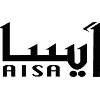


 Tel: +93 0202100428
Tel: +93 0202100428